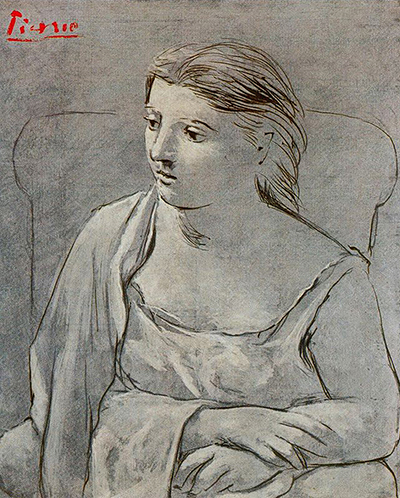A maestro in using charcoal, pencils as well as the unlikeliest of colour shades to highlight is virtuoso in showing detail on paper is what Picasso is best known for. He was a jack of most if not all trades when it came to using a variety of mediums to showcase his genius. His painting, though not a focal point of his art, were used to show his variety in adopting different cultural artistic styles in passing his messages. Picasso style of Expressionism and Cubism dominated his painting; however, his time in sojourn in Cap d'Antibes showed a different form of his art more so when analysis the ‘woman in white’ painting.
Since 1918 to 1925, Picasso desiccated much of his time on portrait painting and the ‘lady in white’ stands out as the best art of classical antiquity ever delivered. The painting is of a woman draped in a white cloth that is detailed by using shades of white, black and grey. Picasso uses his sketching skills to enhance his detailing bringing depth into focus as shown on the woman’s neck, nose, eyes and the folding on her cloth. The background is darkened by a shade of grey making the centrepiece more authentic. The shading of the woman’s hair is a masterclass as it gives density as well as style. The qualities of art used by Picasso in the woman in white painting can be regarded as revolutionary. He brings his sketching style that he is well known for to a style of painting that is dull.
The ‘woman in white’ is an equivalent of ‘le chat’ sketch but in painting and not sketching. This is the turning point of contemporary art considering such depth or life highlighted by the use of different colours and their shades. It is amazing to see how Picasso uses only three colour shades to bring the truth or life out of a sheet of canvas. There are no particular relations with this form of style with any other of Picasso’s paintings making it a one of a kind piece.

